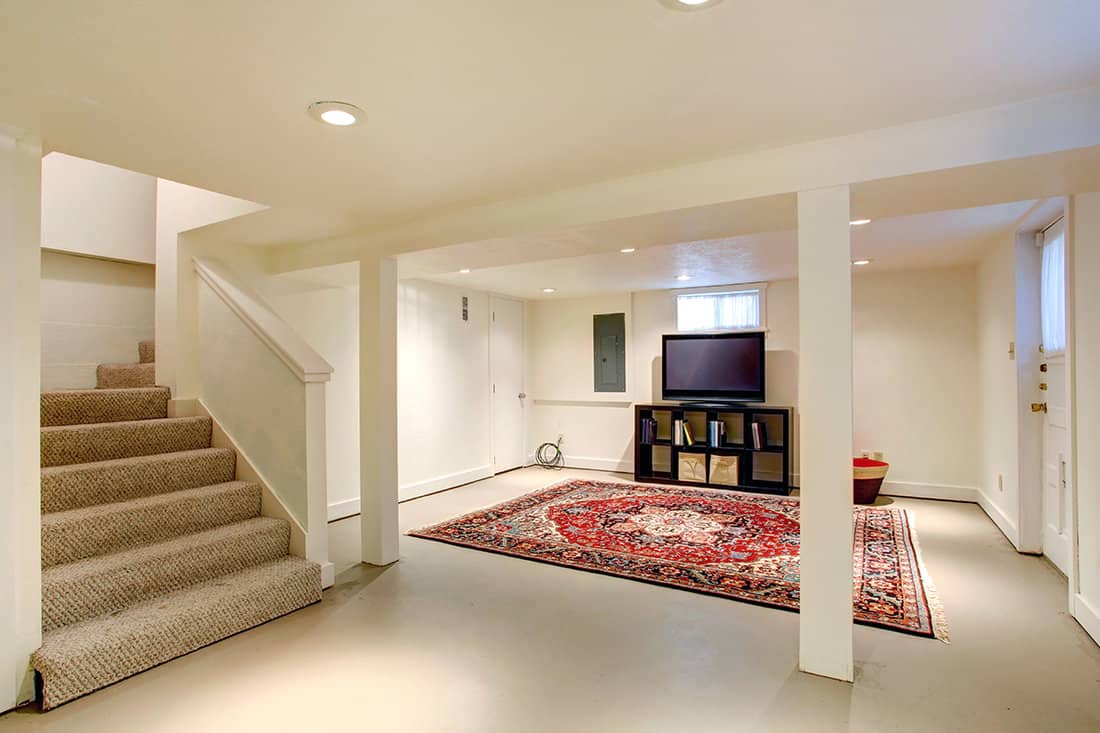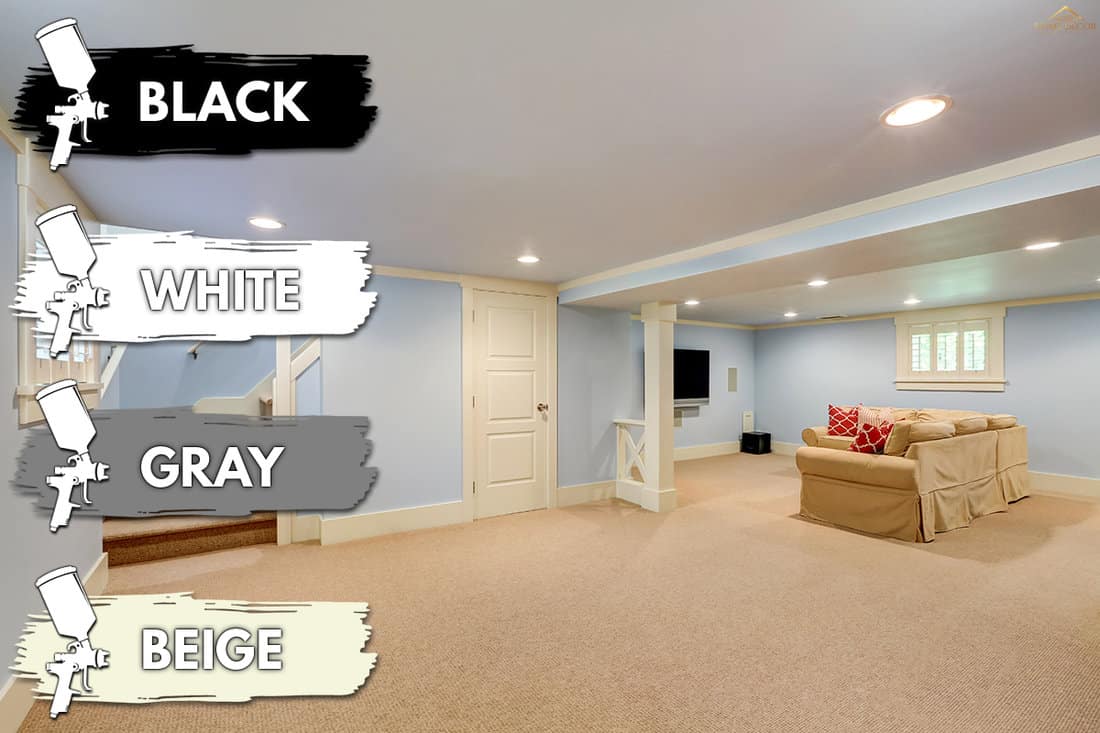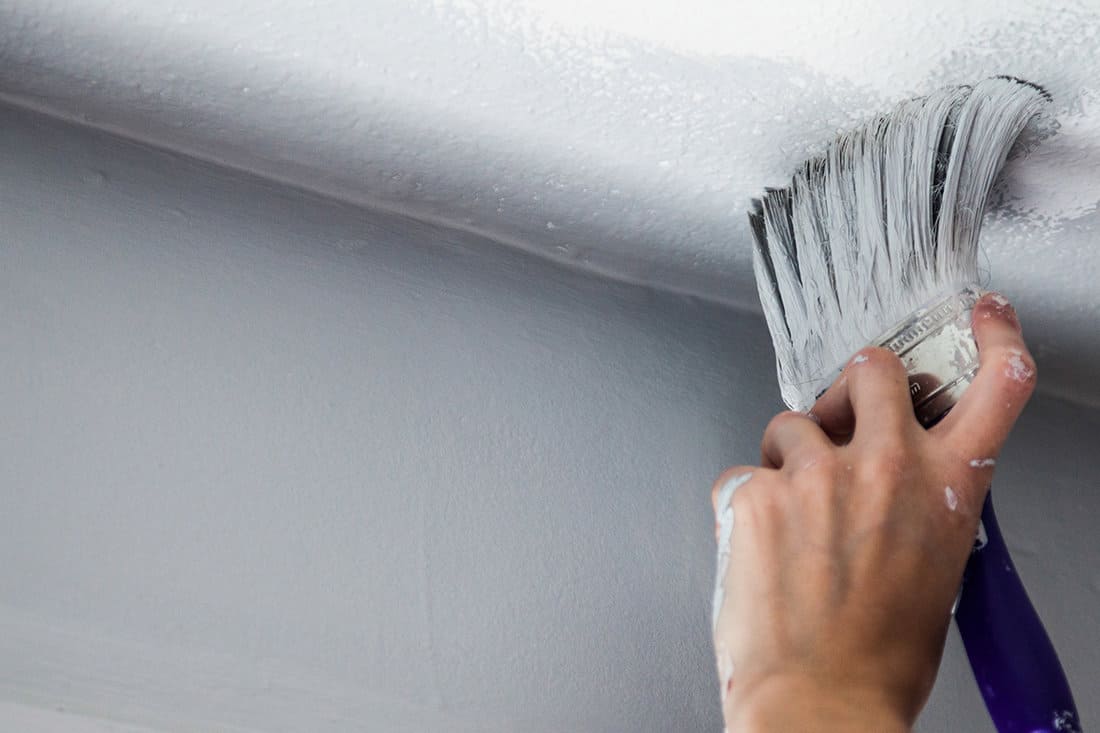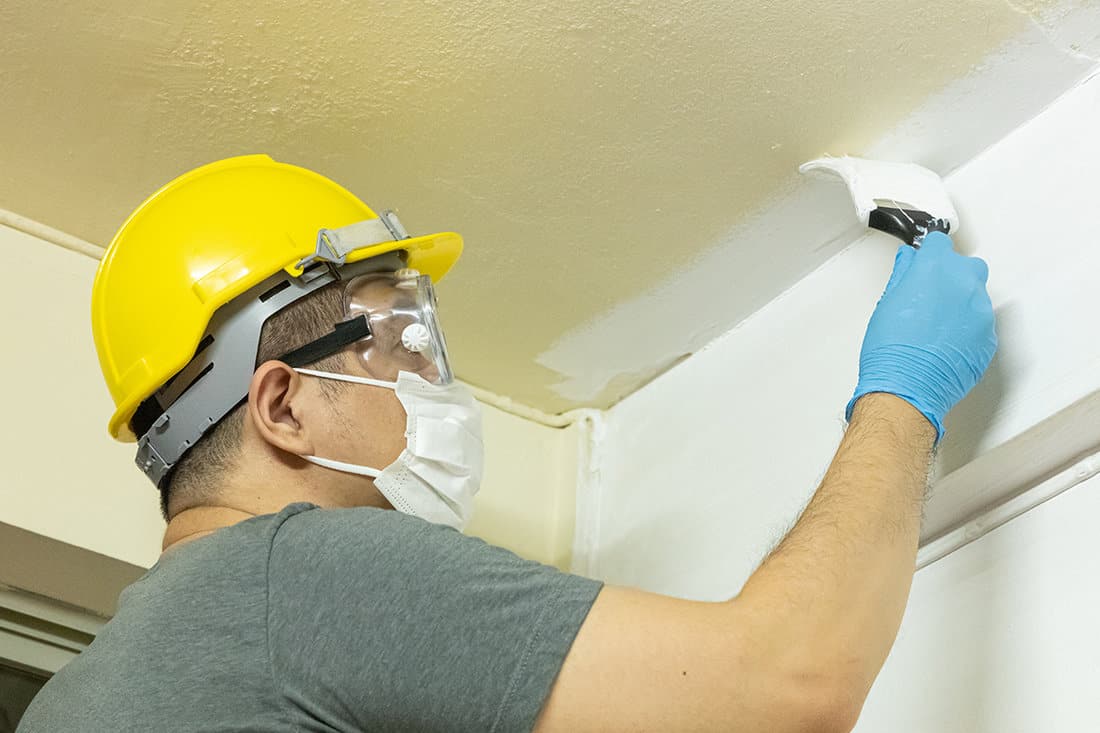You are considering painting your basement ceiling, but you're unsure if it's a good idea or not. What are the benefits and drawbacks of painting it? Find out from the detailed information in this post. It will help you land to your best decision.
Painting a basement ceiling that is exposed allows accessibility to the area, such as plumbing and HVAC systems, and extends the height visually. It is budget-friendly and can add lighting to your basement, depending on the color. It also helps in pest control.
However, it can be time-consuming for a DIY project and does not provide further sound insulation.
Painting is one consideration in reviving your basement. Learn more about painting your basement ceiling and how to do it. Also, discover the things that you need to know in preparing to paint your basement ceiling.
Painting A Basement Ceiling [Pros & Cons]
A basement is a utility area below the ground floor of a house. It is where you usually see the wiring and systems for your water heater, furnace, and other HVAC systems.
You can level up your basement and turn it into an entirely new space for entertainment and fun, such as a game room, home bar, theater room, or home gym.
Painting your basement ceiling for a makeover is a good idea. It has benefits and also some downsides. Nonetheless, painting it is not a bad idea at all.
Pros

A painted basement ceiling has a lot to offer, from providing an industrial style to protection from pests. Painting your ceiling is a good idea if your problem is pests or you're aiming for a modern upgrade.
Access To Your HVAC systems
Having a painted exposed ceiling is convenient. You can easily reach the plumbing or electrical wires when it needs repair or checking. Maintaining the systems is also handy since you can monitor them every time.
Another thing is it saves you money from installing or replacing drywall. Hard water calls for regular pipe fixes, so having an open basement ceiling is an advantage.
Adds Visual Height
Painting your ceiling instead of drywalling it makes it look high. This is very beneficial for a basement with a low ceiling and creates the visual illusion of a spacious and high ceiling. The vertical patterns of the floor joists make the wall look extended. Drywall makes the ceiling lower by an inch.
Affordable
Painting your basement ceiling instead of installing a drop ceiling or drywall saves you money. It is much cheaper to paint it yourself. Bringing in a professional may end up costing just as much as drywall would have. if you're an avid DIYer, painting yourself will do the trick and fit your budget.
Aesthetic
Painting an exposed basement ceiling will transform the entire room. Choosing better lighting will enhance the atmosphere you want for your basement. Choosing the style for your basement and matching it with your paint color and lighting will make it a fantastic makeover.
Adds Lighting
Of course, painting bright or light colors on your ceiling makes the room more spacious and large. A white ceiling makes the room brighter and mirrors other colors in the basement. It makes it a little lighter.
For instance, a deep blue wall can appear light or pale blue on the ceiling. Thus, covering the whole room and making it look brighter overall.
We may include affiliate links and curated AI content to highlight top design styles.
Check out this paint interior on Amazon.
Control Pests
Having an open basement ceiling means you're not attracting pests to live in the corners of your ceiling. Pests may travel within the installation in drywall or insulation and ruin your ceiling. But a painted open ceiling has a clean look, and you can easily spot any cracks or damages in the case.
Cons
If there are advantages to a painted basement ceiling, there are also drawbacks that make you reconsider the kind of basement you have and whether paint fits your ceiling.
No Sound Insulation
The sound travels through your basement ceiling. Since it is exposed, there's no blockage or wall to hinder noise from upstairs, unlike drywall or other ceiling walls. Chances are heavy footsteps or loud sounds from upstairs will be audible in the basement.
Time-consuming DIY Project
Painting your basement ceiling can be exhausting and calls for ample time, from preparation to choosing a paint color to properly painting. Thoroughly plan if you decide to do it DIY so you can trim the time that should've not wasted. Finding a knowledgeable assistant will make your task easier.
Best Paint Colors For Your Basement Ceiling

Black
Black paint can disguise your ceiling for a modern and stylish look. It hides the wires and pipes with a deep and uniform dark tone. It can also hide the blemishes on your ceiling and unfocus the room's edges, making the entire basement feel larger.
Bold colors like black can give personality to your basement and tends to provide warmth and coziness to a space. A black ceiling in a home theater basement is a perfect choice. It heightens the theatrical ambiance of your theater. You can blend neutral or a pop of color in a black ceiling basement to have a vibrant space.
Check out this paint black on Amazon.
White
White paint brightens up your entire basement. It is also flexible with other colors. So, you can easily choose your decor or furniture with white. You need a white ceiling if you lack natural light in your basement.
It is very amicable as a children's playroom or livelier living space. Apply 2 coats of white paint to an exposed basement ceiling to hide the wires and have your ceiling covered with plainly clean white.
Check out this white matte paint on Amazon.
Gray
A light gray basement ceiling is cozy and complements various colors of furniture and decor due to its neutral tone. Gray is also effective in hiding imperfections on your ceiling better than white. It needs 2 coatings to achieve a seamless shade of gray.
You can also add some of its undertones, such as brown or blue. A darker gray will also do. It gives benefits similar to black. A richer color of gray can turn your basement into a sophisticated style.
Check out this paint interior matte on Amazon.
Beige
A beige basement ceiling gives warmth with a brown or orange undertone. Beige can be pale or cream and doesn't overpower other colors. It blends well with them, either in light or dark colors.
It lightens your basement and is a good space for kids and your whole family. Pair it with a darker color to make your basement dramatic and welcoming.
Check out this home paint on Amazon.
How To Paint Basement Ceiling

A DIY for painting your basement ceiling can be taxing. Invest in an airless spray gun or rent one from the hardware shop. It makes your painting project much easy. Having the right equipment and planning makes your painting project organized and satisfying.
Preparation
- Collect all the equipment and materials you need. Decide if you're going to use a spray gun.
- Check and secure all the HVAC systems and wires on your ceiling. Adjust the wirings and vents as needed and ensure they are well-maintained before painting.
- Check all sharp or sticking nails. Smoothen them out with a rotary tool. It also ensures your safety while inspecting your pipes and vents and during painting.
- Don't forget to clean your ceiling with a broom or brush. Remove the cobwebs with a vacuum. Use an air compressor for dirty areas of your ceiling.
- Cover all the areas you don't want to paint with painter's tape, such as lighting, windows, and electrical switches.
- Cover the floor. Put contractor's paper or drop cloths on the floor to avoid spills and splashes from getting onto the floor.
- Be careful when painting near an electrical source. It's better to turn off the breaker in your basement and get external lighting as you go on with the project.
- Protect yourself always. Wear protective gear on your eyes and skin to avoid accidents while handling your equipment correctly.
Painting Basement Ceiling

Prepare your tools before starting the painting job. Here is the list of equipment you will need:
- Airless spray gun
- Paint
- Primer
- Ammonia
- A ladder
- Protective gear
- Apply a primer. Match it with the paint color of your choice. Spray primer on the pipes, ducts, wires, and rafters. Spray onto the ceiling swiftly and evenly. Wait for the primer to dry for at least 4 hours before applying the second coating. Use ammonia to clean off the primer from your spray gun before putting in the paint.
- Use a ladder to coat all the corners of your ceiling. Spray paint on your ceiling in the same process as your primer. You need 3 coatings to smoothly and fully paint your ceiling. Leave an hour for each coat to dry completely.
- Lastly, check all the corners and spaces with uneven spraying or missed spots.
Check out this airless paint spray gun on Amazon.
Summing Up

Painting your basement ceiling can be a great idea! It will not only provide aesthetics to your basement but also adds visual height and be budget-friendly. However, it does not provide extra insulation and can be taxing for a DIY project.
Discover more about basement ceilings on these posts:
Best Lighting For Unfinished Basement Ceiling [5 Options Explored],








